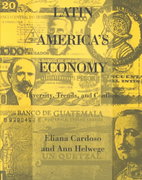Question
A perfectly competitive industry has a large number of potential entrants. Each rm has an identical cost structure such that long-run average cost is minimized
A perfectly competitive industry has a large number of potential entrants. Each rm has an identical cost
structure such that long-run average cost is minimized at an output of 20 units (qi (qi) = 20). The minimum average cost is $10 per unit. Total market demand is given by
Q = 1,500 - 50P.
a. What is the industry's long-run supply schedule?
b. What is the long-run equilibrium price (P*)? The total industry output (Q*)? The output of each rm (q*)? The number of rms? The prots of each rm?
c. The short-run total cost function associated with each rm's long-run equilibrium output is given by
C(q) = 0.5q2 - 10q + 200.
Calculate the short-run average and marginal cost function. At what output level does short-run average cost reach a minimum?
d. Calculate the short-run supply function for each rm and the industry short-run supply function.
e. Suppose now that the market demand function shifts upward to Q = 2,000 - 50P. Using this new demand curve, calculate equilibrium price and quantity (for the firm as well as the industry) for the very short run when rms cannot change their outputs.
f. In the short run, use the industry short-run supply function (from part (d)) and the new market demand function to recalculate equilibrium price, total industry output, firm output, firm profit.
g. What is the new long-run equilibrium for the industry with the new market demand curve?
Step by Step Solution
There are 3 Steps involved in it
Step: 1

Get Instant Access to Expert-Tailored Solutions
See step-by-step solutions with expert insights and AI powered tools for academic success
Step: 2

Step: 3

Ace Your Homework with AI
Get the answers you need in no time with our AI-driven, step-by-step assistance
Get Started


